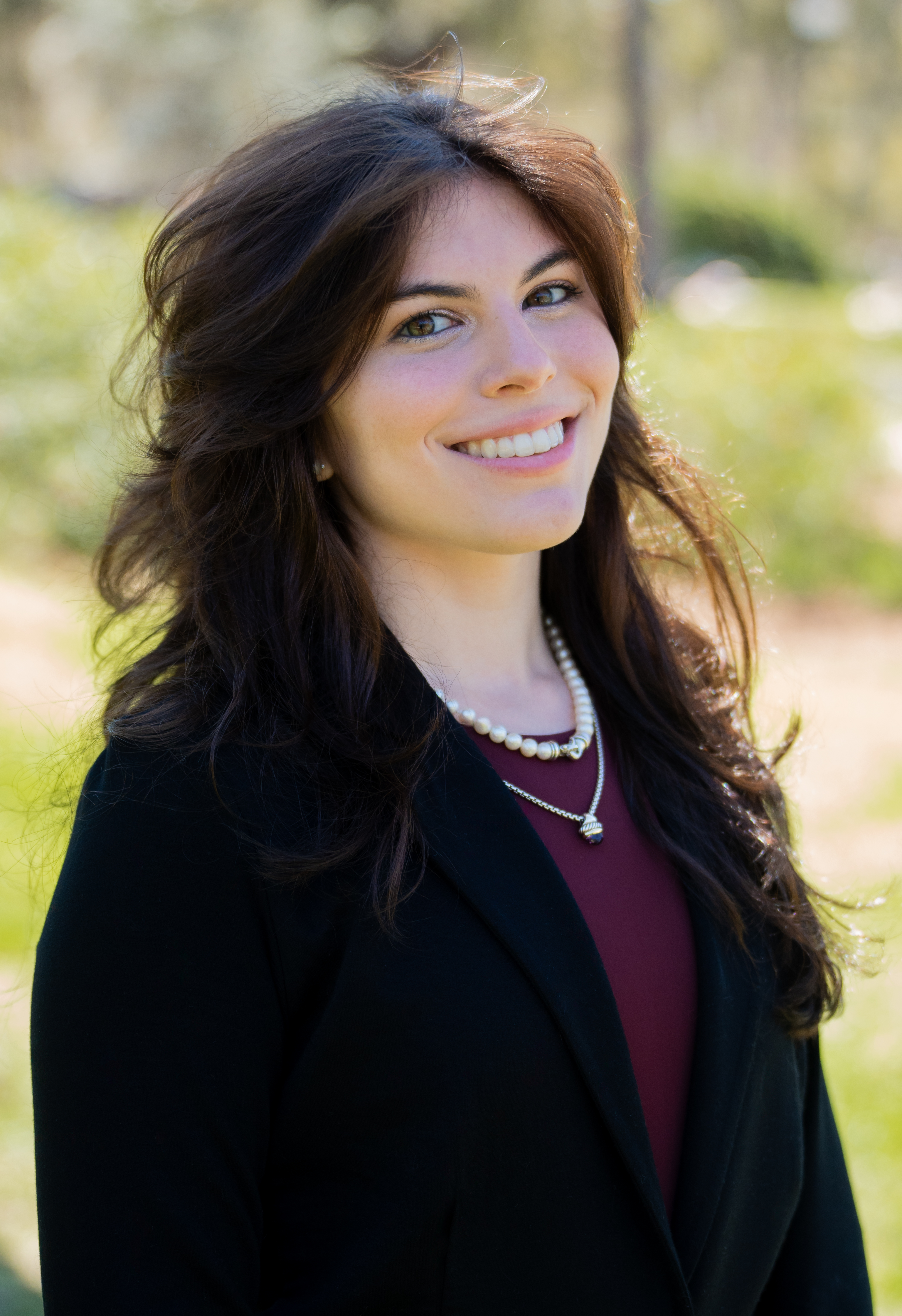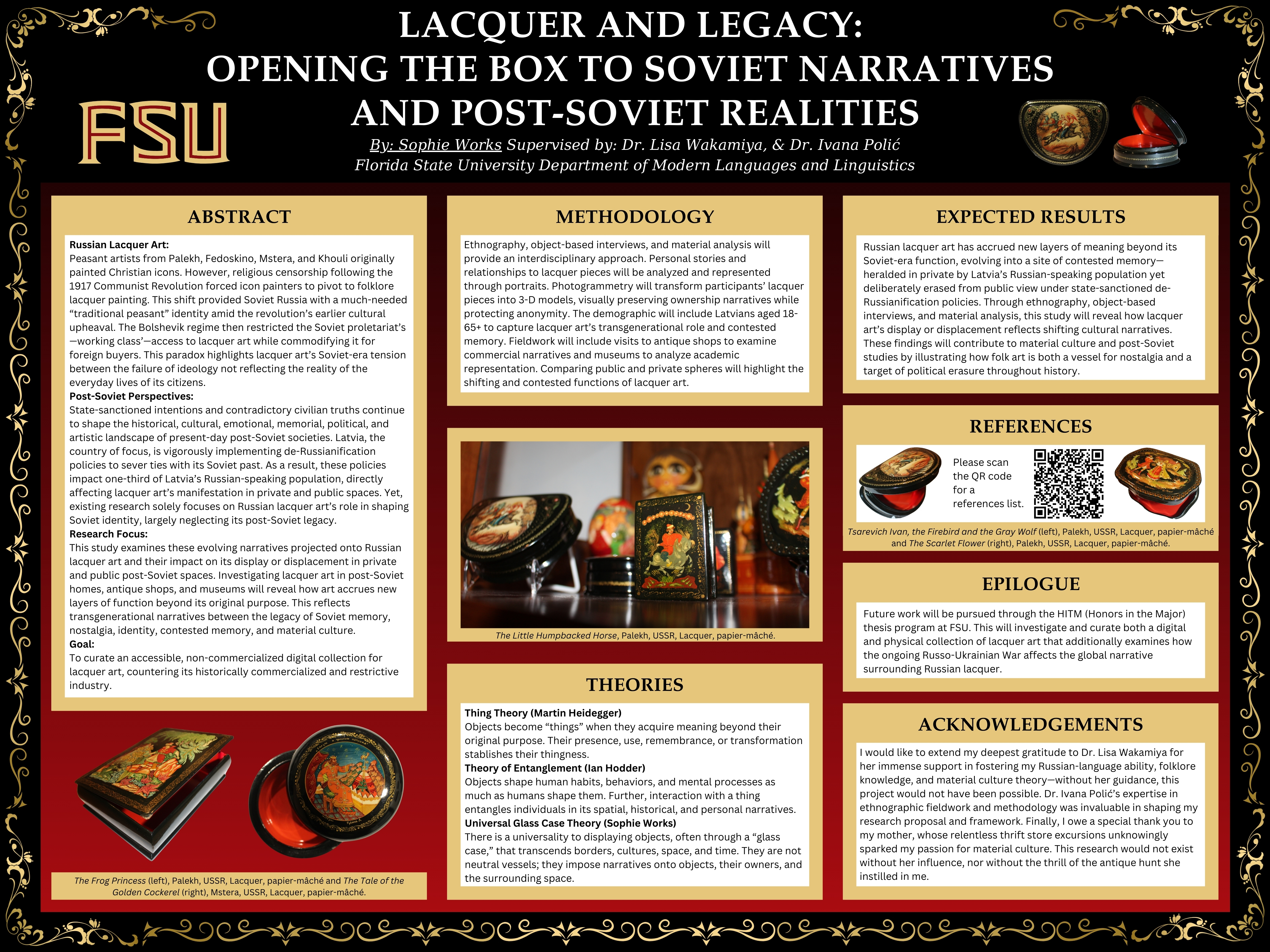Research Symposium
25th annual Undergraduate Research Symposium, April 1, 2025
Sophie Works Poster Session 4: 3:00 pm - 4:00 pm / Poster #270

BIO
Sophie Works is a third-year honors student pursuing a dual degree in Russian (Slavic) Studies and International Affairs with a concentration in Russian. Inspired by the emotional bond she developed with her mother through her collection of Russian lacquer art, Sophie began her current project which investigates the evolving narratives projected onto Russian lacquer art and how these attitudes reflect the manifestation of these objects in private and public post-Soviet spaces. Her work highlights themes of Soviet nostalgia, contested memory, and material culture, analyzing how changing cultural identities shape the display or displacement of lacquer art in post-Soviet homes, businesses, and museums. Sophie is a member of the Tyler Center for Global Studies Undergraduate Research Award 2025 Cohort, a member of the Global Scholars 2025 Cohort, and is conducting her Honors in the Major research on the same topic, where she is working to establish her research in a 3D digital space while deepening her Russian language skills in Riga, Latvia. After graduation, Sophie plans to pursue a Ph.D. in Russian and Slavic Studies, dedicating her career to examining Soviet objects in post-Soviet realities.
Lacquer and Legacy: Opening The Box to Soviet Narratives and Post-Soviet Realities
Authors: Sophie Works, Dr. Lisa Ryoko WakamiyaStudent Major: Russian (Slavic) Studies & International Affairs with a concentration in Russian
Mentor: Dr. Lisa Ryoko Wakamiya
Mentor's Department: Modern Languages and Linguistics Mentor's College: Arts and Sciences Co-Presenters:
Abstract
This study investigates the narratives projected onto Russian lacquer art and how these attitudes reflect the manifestation of these objects in private and public post-soviet spaces. The folk artists of Palekh, Fedoskino, Mstera, and Kholui were originally icon painters. In the decades following the religious censorship of the 1917 revolution, they pivoted to folklore lacquer painting to supply Soviet Russia with a needed sense of national identity amidst the revolution’s earlier cultural upheaval. Ironically, their meticulous and celebrated production of lacquer art was not intended for use by the proletariat of Soviet Russia and the USSR. The state’s policies and priorities of constructing a thriving facade restricted access to these creations, revealing a broader tension between the failure of ideology not reflecting reality and the everyday lives of its citizens. Today, these narratives continue to illustrate themselves in post-soviet realities. This study highlights how national trauma, collective memory, and nostalgia affects Russian folk art’s display or displacement in post-soviet homes, businesses, and museums. Together, Martin Heidegger’s Thing Theory, Ian Hodder’s Theory of Entanglement, and my Universal Glass Case Theory will propel my analysis. Further, as it is a universal tradition to display sentimental, beautiful, or functional items in the home, examining the role of Russian folk art in these spaces reveals how Russian folk art accrues new layers of function—beyond its original intent—reflecting evolving relationships between identity, memory, and material culture.
Keywords: Soviet, Memory, Art


